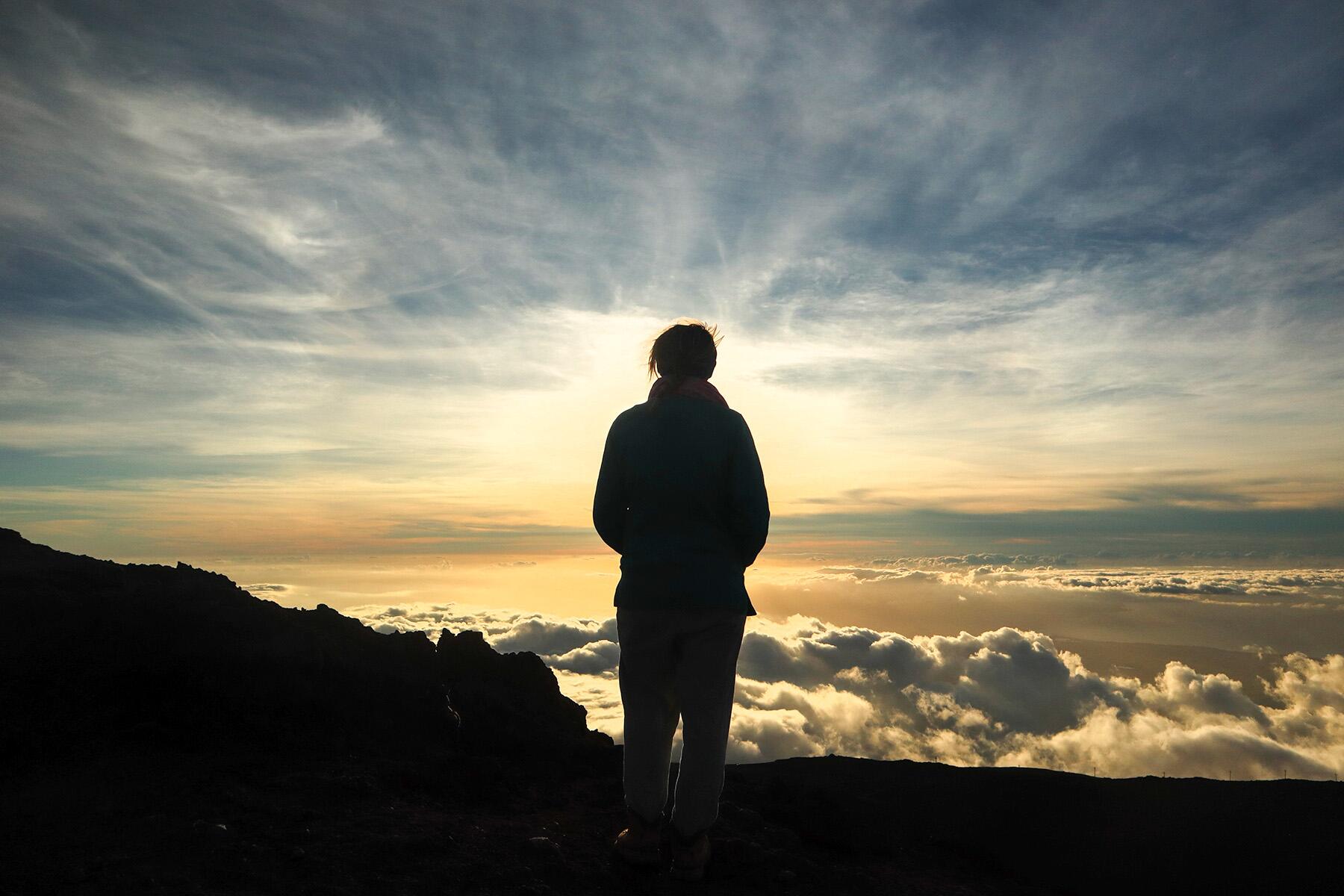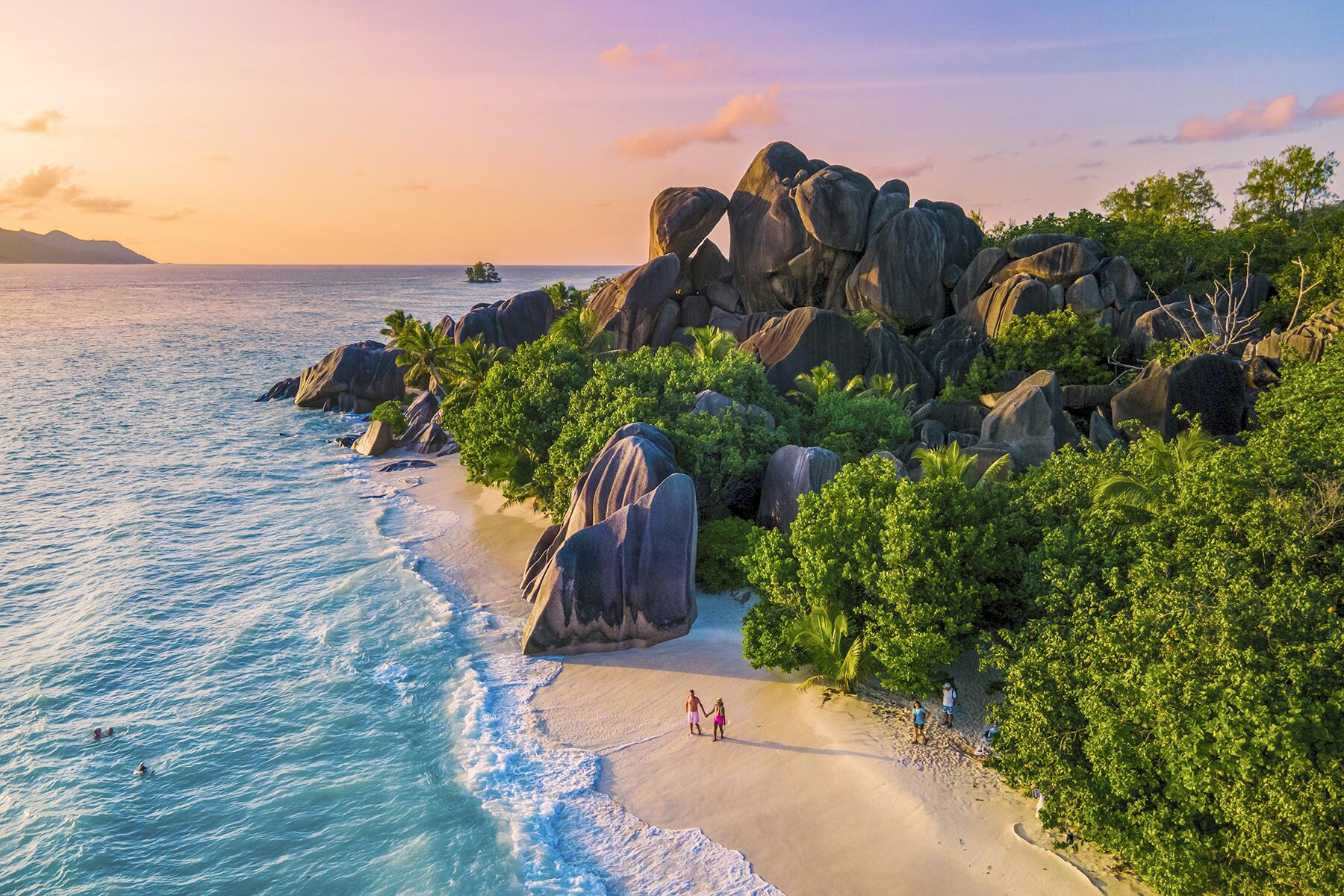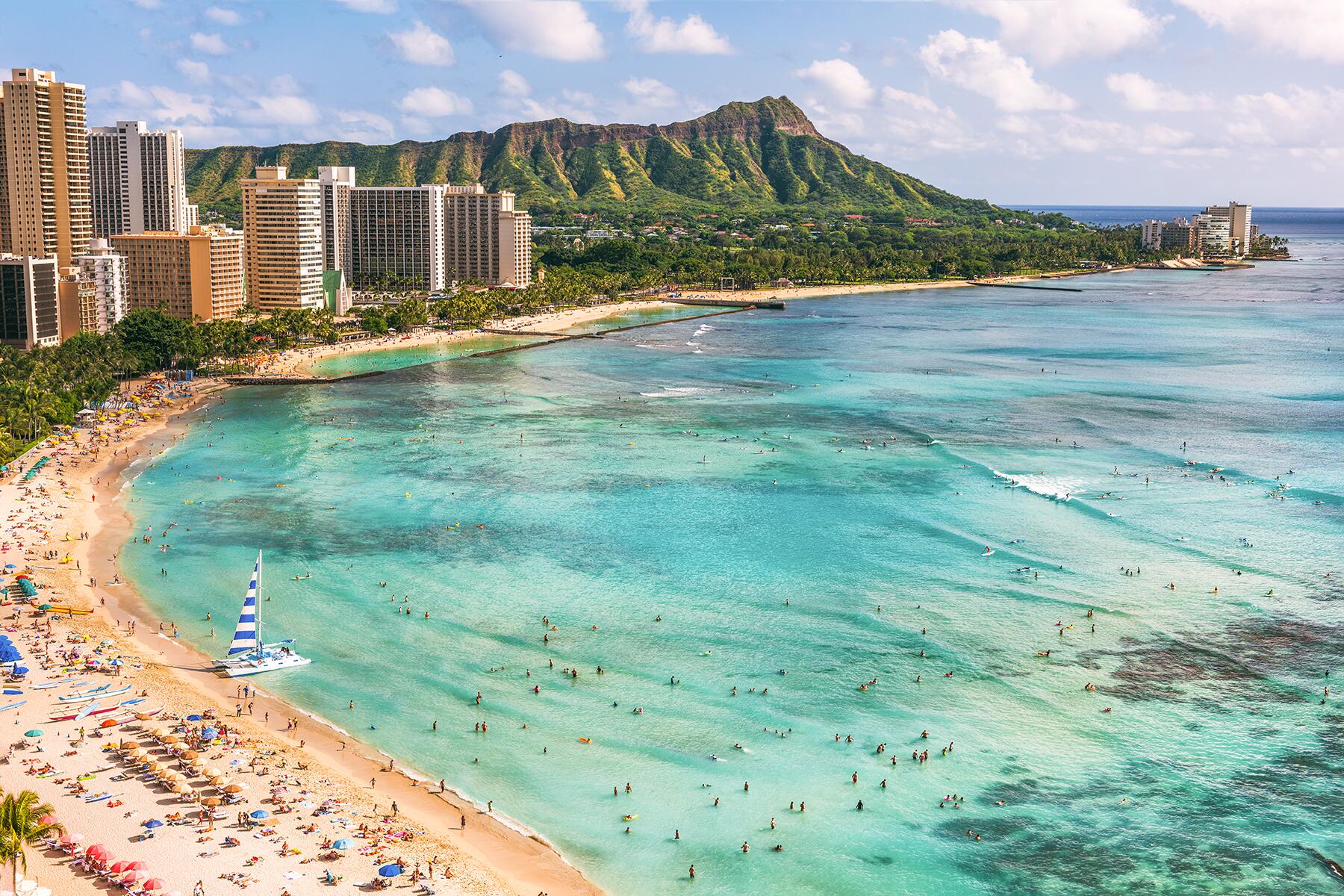A visit to Hawaii shouldn't be an episode of 'The White Lotus.'
Every destination has its own unwritten rules and way of doing things, and Hawaii (also known as The Aloha State) is no different, even if it is part of the United States. Some of this disconnect is down to the much overused (and often misconstrued) term of Aloha. More than just a word used to express everything from love, affection, peace, and sympathy, it’s a way of life and an honor code that focuses on kindness and respect, and one that’s extended reciprocally.
As Hawaii re-opens to the world, coupled with recent Hot Vaxxed Summer antics—harassing endangered species for Instagram selfies, trespassing on state land and having to be airlifted to safety, general disregard for mask mandates—it’s not a bad idea to know what locals and residents consider pono (righteous) behavior, which also double-up as some sure-fire ways to earn their respect and Aloha.
Give Back to the Aina
Just as having a lilikoi mai tai at sunset or catching a surf break in Waikiki Beach is a quintessential Hawaii experience, so should a hands-on experience with Hawaii’s precious aina (land). The Hawaiians are masters of conservation and have long-lived off their land using ingenious methods to farm and fish for their community. Through the Malama Hawaii Program, there are numerous voluntourism programs (a helicopter tour that ends with a tree-planting activity, restoring a native Hawaiian fishpond, harvesting taro at the iconic Kualoa Ranch) visitors can join to malama (give back), and see a different side of Hawaii and what makes it so special. In exchange, visitors can earn free hotel nights or discounts on hotel stays, but the reward is in knowing you’ll leave Hawaii better than when you arrived.
Respect the Wildlife
If you’re lucky enough to stumble upon a resting Hawaiian monk seal, the respectful (and legal) thing to do is to keep a 50-feet distance, unless you fancy paying a hefty fine. The critically endangered species (there are only about 1,400 seals) along with honu (sea turtles), spinner dolphins, and humpback whales are protected by state and federal law to ensure they get adequate rest and not be exposed to physiological stress which can harm their reproductive success.
“It can be an amazing experience to view marine wildlife in Hawai‘i. And to keep those experiences positive—both for the wildlife and you—please practice respectful and lawful viewing.” Shares Jeff Walters, Chief of NOAA Fisheries Wildlife Management and Conservation Branch in the Pacific Islands Region. “Many species, like the Hawaiian monk seal, are not only endangered but also endemic, meaning they are found nowhere else on earth. Hawaiian monk seals, sea turtles, and all whales and dolphins are protected under the Endangered Species Act or the Marine Mammal Protection Act. Visitors should also know that these animals have deep cultural significance in traditional Hawaii culture. By following our marine wildlife viewing guidelines, we can all stay safe, lawful, and respectful, while having an enjoyable, enriching viewing experience.”
INSIDER TIPFollow the “rule of thumb” method: Make a thumbs-up sign and stretch out your arm, then turn your thumb parallel to the ground following the line of sight with the animal. If your thumb covers the animal entirely, then you’re at a safe distance.
Recommended Fodor’s Video
Stay on Marked Trails
No one likes to follow in the footsteps of the masses, but going off the beaten track in Hawaii causes plenty of issues. Take Oahu’s Haiku Stairs that spans more than 3,000 steps along the Ko’olau mountain range in Oahu, the hike is technically illegal and as of September 8, the Honolulu City Council has voted unanimously to remove the stairs (although there is a compelling argument to keep it open under managed access by the Friends of Haiku group). The Stairs to Heaven isn’t the only Insta-popular spot that is technically off-limits to the public, Bamboo Forest and Kaihalulu along the Road to Hana have seen their fair share of incidents as well. The real problem isn’t about illegal trespassing but safety and the drain on resources involved in air rescue. What’s the cost? Anywhere upwards of $10,000 and if Bill SB700 gets passed, individuals who deliberately disobey warning and no trespassing signs may be on the hook for full or partial reimbursement for the search and rescue cost.
Know Your Limits, Especially in the Water
The locals have great respect for the ocean and its power and take the necessary precautions, checking on the surf forecast and watching the movement of the waves and swell before running into the surf. Hence, if the place is labeled off-limits (officially or unofficially), or a “No Surfing” sign is erected, it’s best to adhere or risk getting swept out or facing off with a shark. Similarly, those in the know never get too close to blow holes (there have been numerous fatal incidents at Halona Blowhole) as it’s too easy to get knocked down and sucked into a cave or become engulfed by the roaring waves.
Be Considerate on the Road to Hana
Newsflash! The 65-mile-long Road to Hana in Maui is more than just a tourist attraction, it’s the only road in and out of Hana, which means cruising down its 600 turns and 59-bridges requires consideration (always pull over for local traffic) and some common sense (don’t randomly stop your car on a bridge and block traffic). The situation has gotten so bad that the Hawaii Department of Traffic has installed approximately 70 “No Parking” signs on Hana Highway, which entails a $35 no parking fine and a $200 surcharge for illegally stopping on a state highway. A better way to explore Hana is to take your time to do so, spend some time in the area so you can explore the waterfalls and hard-to-reach beaches at leisure, or join a guided tour that’ll take you to all the “secret” sights, safely. Whatever you decide, go with the mindset to slow down and take in this very special spot so you feel what the fuss is all about.
INSIDER TIPIf you want to leave Maui without a ticket, look out for the No Parking signs installed at Waikamoi Stream Bridge, Twin Falls, Bamboo Forest, Ching’s Pond, Waikalani Bridge, Puaa Kaa Park, and Hanawi Bridge.
Look, Don't Touch
The same rule that applies to Hawaii’s protected animals applies to Hawaii’s lava rocks and coral reefs: admire them, leave them alone, and don’t bring any home. Lava rocks are considered sacred and if Pele’s Curse is to be believed, bad luck will befall anyone who tries to leave with one (the same applies to sand, rock, and pumice) as a souvenir. And while it sounds like common sense not to touch the lava, with Big Island’s Kīlauea volcano’s recent eruption, the chance to get close to some lava (and touch it) might prove too enticing to some–just don’t do it.
Actually Learn Hawaiian History and Culture
It will take a lifetime (and then some) to understand the length and breadth of native Hawaiian history and culture, but the knowledge gives you a deeper appreciation of why things are the way they are in Hawaii. Some facts are understandably uncomfortable (namely the 1893 US-led coup of the Hawaiian government) but enlightening and reading Queen Liliʻuokalani’s speech protesting the overthrow is particularly revealing of the Hawaiian mindset and affinity for treating people with respect, kindness, and Aloha. Make the time to visit the Iolani Palace and Bishop Museum, or plan to attend the annual Merrie Monarch Festival in Hilo, Hawaii. The week-long cultural event every spring is a celebration of Hawaiian culture, where the main event sees the best hula dancers (male and female) take part in a three-day hula competition with no coconut shell bras in sight.
INSIDER TIPIf you’re short on time, here are some Instagram resources to bookmark: Adam Keawe, Aina Momona, and Aloha Kuamo’o Aina.
Pack (and Wear!) Your Face Mask
Don’t be this guy–the one that gets arrested for punching a security guard over refusing to wear a face mask. There’s still a mask mandate in Hawaii which means anytime you’re in an indoor setting, any individual over the age of five years old is expected to wear a mask. Another thing to note is there are restrictions in place (until December 1st) for group gatherings which are currently limited to no more than 10 people for indoor gatherings, and no more than 25 people for outdoor gatherings.
Don't Skirt Around Mandatory Quarantine Rules
Depending on your (or family member’s) vaccination status entry and point departure, entry to Hawaii can get complicated and might involve a 10-day quarantine if the appropriate paperwork is not provided. The rules on Safe Travels Hawaii outlines the process in detail with different scenarios (direct international, indirect international travel, etc.) but the short answer for unvaccinated individuals is you’ll need a negative test (and upload your results to Safe Travels Hawaii for a QR code) from a trusted testing/travel partner no more than 72 hours to bypass quarantine. And before you think about creative ways to break quarantine, you face being arrested and a hefty fine if you get caught.
Explore Car-Free When Possible
Driving in Hawaii, you imagine long coastal roads with swaying coconut trees and the odd chicken crossing the road. What you don’t bargain for is bumper-to-bumper traffic and packed highways (the H-1 on Oahu gets busy, be warned) but hey, people work in paradise and not everyone lives centrally. Don’t add to the problem and instead, explore using bike-share services like Hi Bike on Hawaii Island and Biki in Oahu (you’ll also save quite a bit on car rental if it’s high season) and consider booking accommodation that offers car-free options to get about. On Kauai, where there’s just one highway that wraps around the island from Polihale to Ke’e, getting about and exploring the historic beachside community of Old Kapaa Town just got easier at the Sheraton Kauai Coconut Beach Resort.
“We have a new bike and walk path complemented by a fleet of new bike cruisers, each complete with a basket and bike lock, that puts our resort guests within biking/walking distance of a variety of retail outlets and restaurants in the town of Kapa’a.” shares general manager Chris Machorek.
Try Locally-Grown Food
By all means, have your fill of poke, kalua pork, and loco moco but Hawaii has a vast array of locally-grown crops (over 40 percent of the land is farmland), and trying some of the canoe crops is one way to support the local economy, and learn about the culture of early Polynesian settlers to Hawaii. “Crops brought in their canoes play a very critical role in today’s agriculture, especially with indigenous farmers.” shares Megan Fox, executive director for Malama Kauai. “Kalo (or taro) being one of the most important. You’ll hear a lot about poi as a starchy side dish to kalua pork, however, it is also used for luau stew or laulau–both made from the delicious leaves of the taro plant. Ulu or breadfruit is another favorite. And warning–once you have our apple bananas, you’ll have a hard time eating a grocery store banana again!”
Support the Unhoused Population
Homelessness is (and has always been) an issue in Hawaii. And while organizations like Home Aid Hawaii and Hui Aloha are helping to make a difference (feel free to make a donation), there’s still plenty that can be done. Plan to volunteer some time at a food bank or host a virtual food drive. Consider also donating locally-produced food via Malama Kauai’s online store that offers produce bags to those in need or tax-deductible donations. “All programs not only support local farmers but also focus on increasing food access for those who are struggling, including houseless, the kupuna (elderly), and keiki (children). As we say here–it’s a kakou thing–we’re all in this together.” shares Fox.




